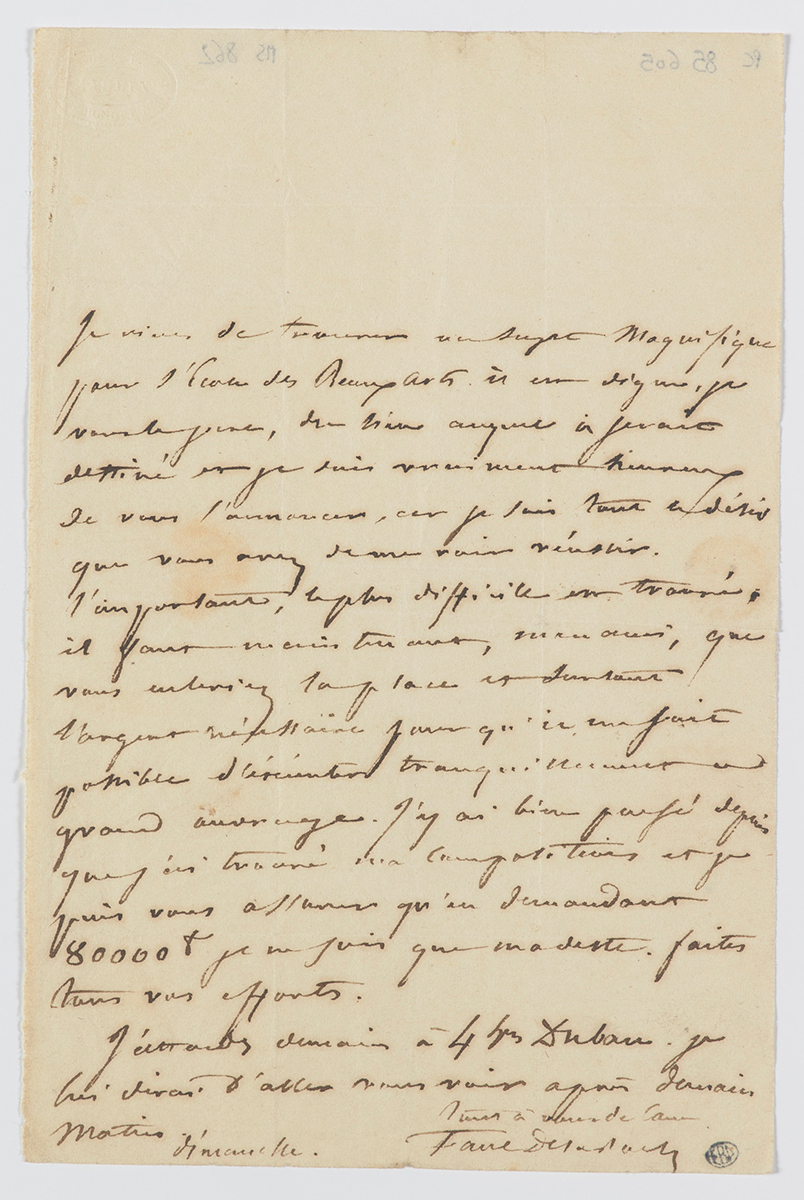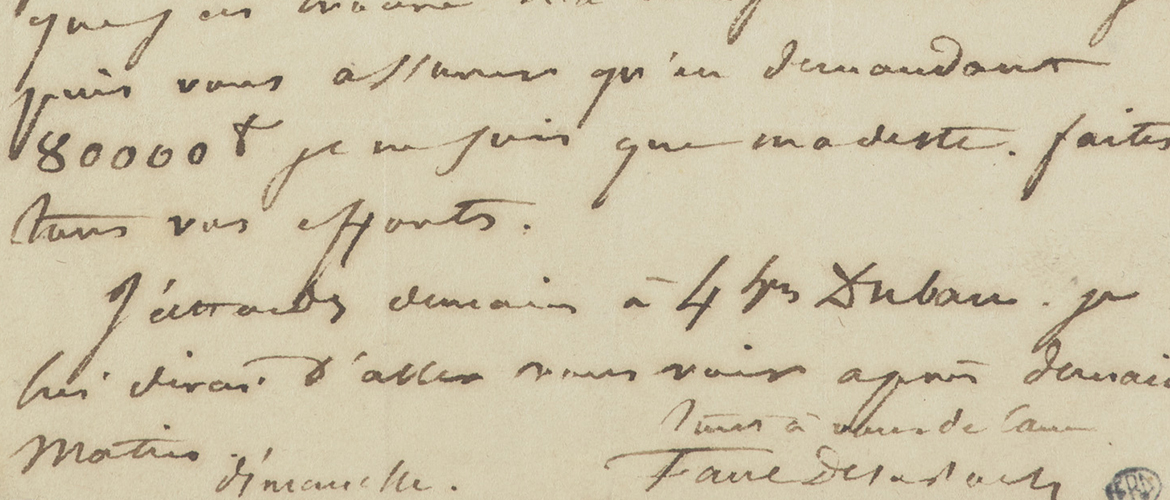Paul DELAROCHE (Paris, 1797 - 1856)
"I have just found a magnificent subject for the Ecole des Beaux-Arts. It is worthy, I swear it, of the place for which it would be destined and I am really happy to announce it to you because I know all the desire that you have to see me succeed. The most important, the most difficult is found, it is now necessary, my friend, that you take the place and especially the money necessary so that it is possible for me to carry out this great work quietly. I have been thinking about it since I found a composition and I can affirm that by asking for 80 000 F I am only modest. Make every effort. I am expecting Duban tomorrow at 4 o'clock. I will tell him to go and see you the day after tomorrow morning. All yours. Paul Delaroche", autograph letter probably addressed to his friend, M. Le Blanc, about the mural of the amphitheatre of honor of Beaux-Arts of Paris, March 1836, in-8°, Ms 862
A student of Antoine-Jean Gros, Paul Delaroche became famous for his so-called "historical anecdote" paintings, which were part of the broader genre of history painting. He was thus elevated to the rank of "coryphée" of this genre by Heinrich Heine. His links with Beaux-Arts de Paris are multiple: first of all, he was a student who completed his studies in 1824, then he was a teacher for about ten years until 1843. Finally, he decorated one of the most famous rooms of the school with one of his works: the honorary amphitheater in which his mural faces the Romulus conqueror of Acron, a work by another great name of Beaux-Arts de Paris, Jean-Auguste Dominique Ingres. In recognition of his strong identification with Beaux-Arts de Paris, a retrospective exhibition was devoted to him at the School in 1857, the year following his death.
The wax painting that Paul Delaroche did for the amphitheater of Beaux-Arts de Paris played as great a role in the fame of the artist as it did for the place. It was commissioned by the minister Thiers. He thus realized Le Génie des arts entouré des artistes de tous les temps distribuant des couronnes. A wax painting begun in 1836, it is signed and dated 1841 in the lower left corner.
It includes 75 life-size figures: in the center Ictinos, Appelle and Phidias, the three artists of ancient Greece, who compose the jury. Four female figures symbolize the periods of art: Greek, Roman, Gothic, Renaissance. 67 artists seem to be conversing with each other, according to an opposition in conformity with the academic doctrine, the supporters of the color occupying the left, those of the drawing the right. Delaroche, close to Romanticism, excluded all the artists (except one) who belonged to the Royal Academy of the Ancien Régime. In front of the ensemble, the allegorical figure of the "Genius of the Arts" takes place. The figure used as a model was a well-known Parisian in 1840, Josephine Bloch, a female model who inspired many artists and poets; in particular, she was one of Baudelaire's Fleurs du Mal.
In the middle of the 19th century, Beaux-Arts de Paris became a model for the whole world: Delaroche's painting accompanied this influence because it summarized the dialogue between the art of the past and living art.

« Je viens de trouver un sujet magnifique pour l’Ecole des Beaux-Arts. Il est digne, je vous le jure... Paul Delaroche », lettre autographe sans doute adressée à son ami, M. Le Blanc, au sujet de la fresque murale de l’amphithéâtre d’honneur des Beaux-Arts de Paris, mars 1836, in-8°, Ms 862



